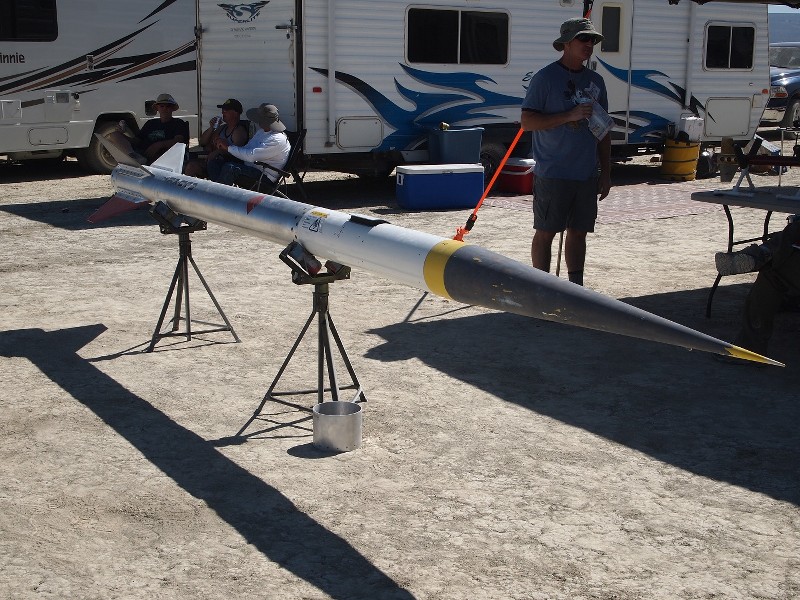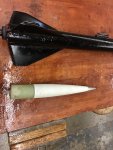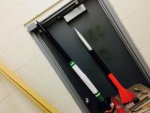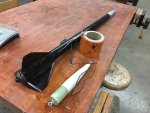Why would a rocket fall back to the ground and supersonic speeds?
Surely the terminal velocity would be high if it fell in the perfect nose-down orientation, but even if it did, i wonder if terminal velocity could ever be supersonic near ground level for a normal rocket. Considering the fuel has been burned the density of the whole thing would not be that large at all.
Also for a re-usable rocket i'd presume they come down a lot slower, aided by a parachute, as a terminal velocity impact with the ground would damage them beyond being usuable again?
In any case, if the body is constructed of nonconductive material fitting a transmitter and antenna assembly would not be that problematic: A usable uhf antenna would only need to consist of some very thin (0.1 mm would be okay) copper strips fitted to the body.
You've got to be extremely careful here with the regulations. The metal body would mean that Radar would pick it up. We are actually pretty close to a Canadian Armed Forces Base.
To further your question about the speed of a rocket coming in without a parachute.
Rockets coming down ballistic from high up can reach speeds well in excess of 600Km/hr, especially the ones we are flying which are in the high power range.
a ~2Kg rocket that falls from approximately ~2000m altitude. According to the math on the java calc the rocket will have an impact velocity of (theoretically) 712.76 km/h. This is because there will be little to no air resistance/drag on the airframe body.
likewise, a rocket falling from 6000m will be travelling the same speed as a .22LR. (sonic) ~1234.54Km/hr.
No... it wouldn't... it's going to have drag. This will dramatically change the
speed of which the rocket will fall. At tops it might hit a velocity of 300-400Km/hr at most from higher than 6Km. since we are only dealing with 2Km
and not much more perhaps not much more than 180Km/hr would be possible.
Of course, the
ideal is to have a bursting charge to blow out a parachute to slow the rocket down as soon as it passes its apogee. This happens 99.9% of the time,
however
occasionally the rocket's pyro-time fuse (disposable rocket engine H,I,J series) fails to ignite the busting charge ( or the electronic alt. sensor such as on reloadables) fails. The whole rocket essentially becomes a very large and expensive lawn dart.
If it happens to be flying over a highway (
not that it should be) or houses

eek

this means very expensive property damage or possibly even death.
The CNRA along with the NRA in the US has made it a rule (unless flying in the White sands desert area with security clearance) that no rocket shall be constructed of metal. I'm taking a guess that this is to prevent worse damage?
True at the speeds we're talking about, whether plastic, carbon fiber, metal or cardboard, a rocket coming in ballistic from high up is going to be capable of doing incredible damage.
I hope this clears things up.
High powered rocketry is a whole other ball game.














